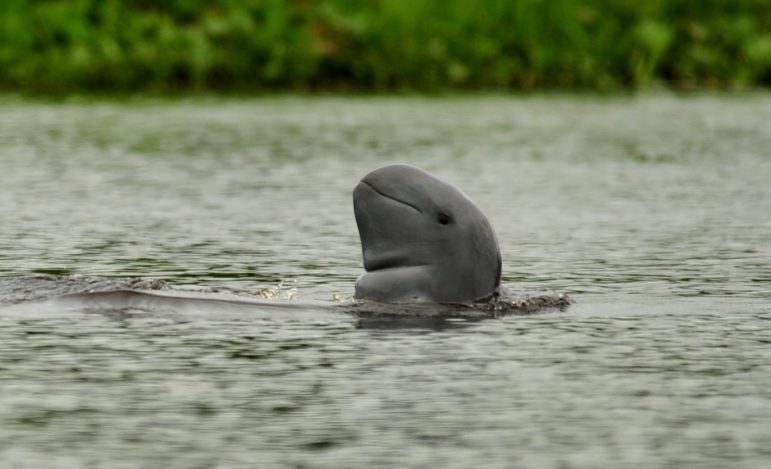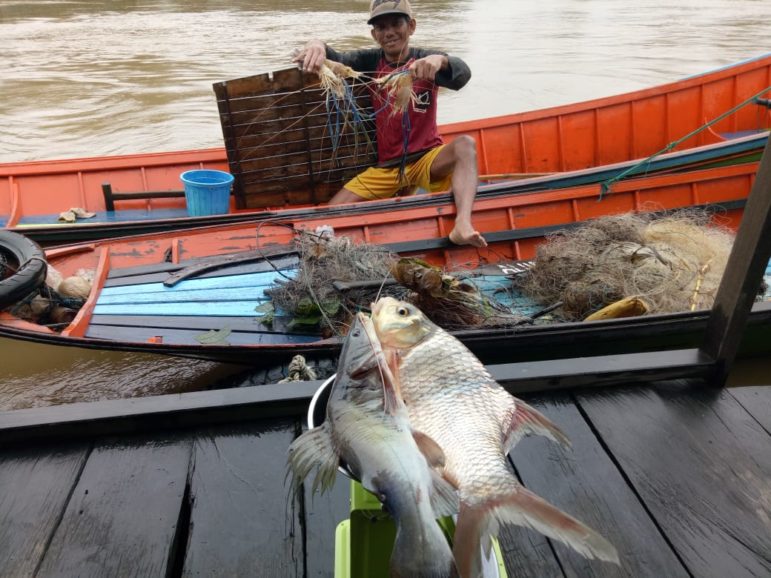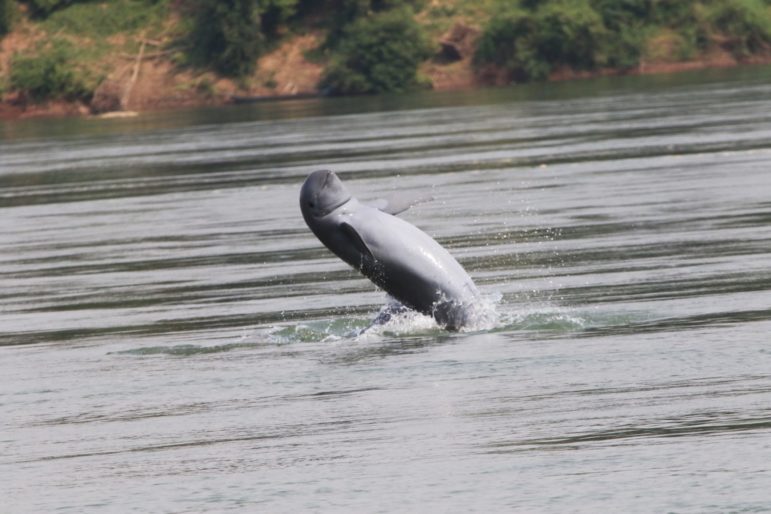
An Irrawaddy dolphin in the Mahakam River, Indonesia. Image courtesy of Yayasan Konservasi RASI.
In October 2021, Mongabay published a report on how local fishers in Indonesian Borneo had collaborated with a nonprofit to conduct a trial to keep Irrawaddy dolphins away from fishing nets, preventing fatal entanglements, a primary threat to the species.
This media coverage brought widespread awareness to the three freshwater populations of the Irrawaddy dolphins that are all critically endangered. Less than 100 individuals remain in each of the rivers they live: the Irrawaddy, Mekong, and Mahakam.
In the Mahakam River, gillnets used to catch fish cause more than two-thirds of recorded dolphin deaths. This represents a significant threat to the species’ future. Given this information, local fishers collaborated with the nonprofit Conservation Foundation for Rare Aquatic Species of Indonesia (YK-RASI) in a trial to test pingers. These devices emit a high-frequency sound that deters the local population of freshwater Irrawaddy dolphins from approaching fishing activity. Aside from protecting the dolphins, the pingers also increased anglers’ catches and reduced costly repairs to nets, which experts from the World Wildlife Fund for Nature (WWF) describe as a “win-win” solution.

A fisher taking part in the Mahakam pinger trial shows his catch. Significantly larger Pangasius spp. fish were caught when the pinger was on. Image courtesy of Yayasan Konservasi RASI.
Real-world impact
“I had written about the threats facing the dolphin population in the Mahakam before,” Mongabay staff writer (Southeast Asia) Carolyn Cowan, says. “When I heard about an initiative, which was a collaboration between WWF and a local NGO called YK-RASI, that was offering a possible solution to one of the many threats the dolphins are facing, I jumped at the chance to write about it.”
Following Mongabay’s coverage, WWF officials informed us that the public awareness raised via the story helped call attention to their campaign for Irrawaddy dolphin conservation. In turn, WWF exceeded its crowdfunding target of more than €7,500 ($8,550) from 76 donors, enabling them to equip all fishers operating in the dolphins’ range in the Mahakam River with acoustic pingers. This action represents a significant step forward in protecting the endangered dolphins that inhabit the waterway.
According to Cowan, reporting on the trial represented an opportunity to investigate how this emerging technology, which had been previously implemented in ocean environments, worked in freshwater: “It was great to learn about this and find out that there was a solution that has the potential not only to save this isolated population of dolphins, but it could also help safeguard other river dolphin species in many different parts of the world,” she says.

A freshwater Irrawaddy dolphin in a deep-water pool in Cambodia. The species has a distinctively blunt nose and playful expression. Photo courtesy of Lor Kimsan / WWF Cambodia.
Cowan recently spoke with a representative of Cambodia’s fisheries conservation department working with the Mekong population of Irrawaddy dolphins. They shared that they were beginning to test pingers as a conservation solution as well. However, they emphasized the need for more research before deploying to ensure the dolphins are not scared away from their productive feeding grounds.
Support independent environmental journalism
If you are interested in helping shed light on conservation stories such as this one, there are two excellent ways you can do so with Mongabay. First, consider making a donation, which directly helps us continue to produce high-impact journalism from nature’s frontline. Second, subscribe to Mongabay’s newsletter to get the latest environmental news delivered right to your inbox.
About Mongabay
Mongabay is a nonprofit environmental science and conservation news platform focused on providing cutting-edge independent journalism from nature’s frontline. We pride ourselves on producing reporting that has substantial, tangible impacts around the world.